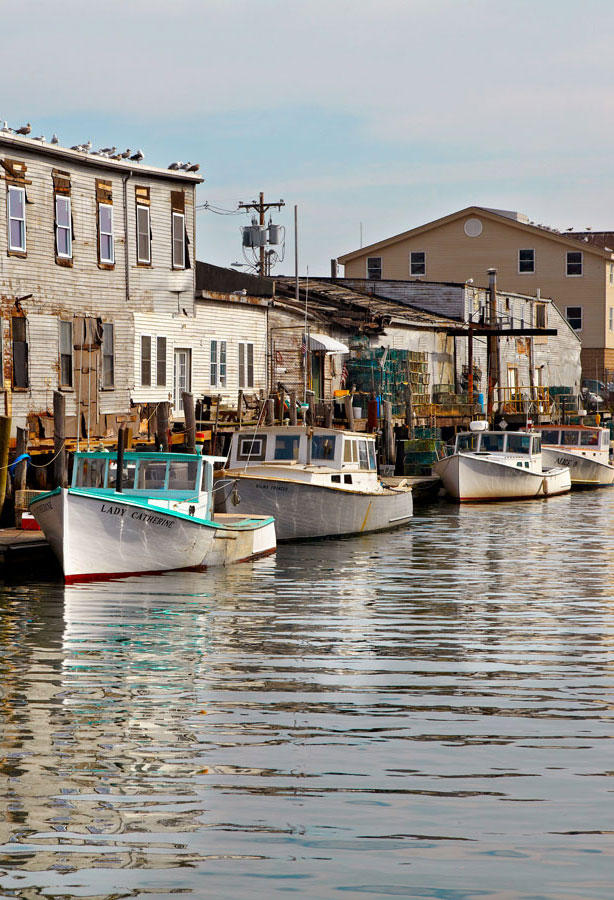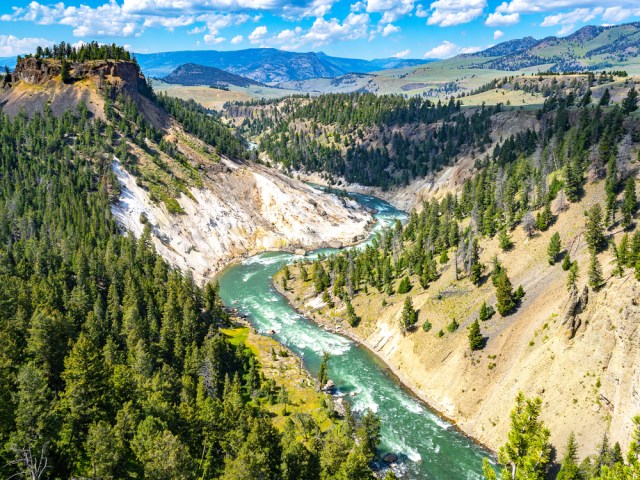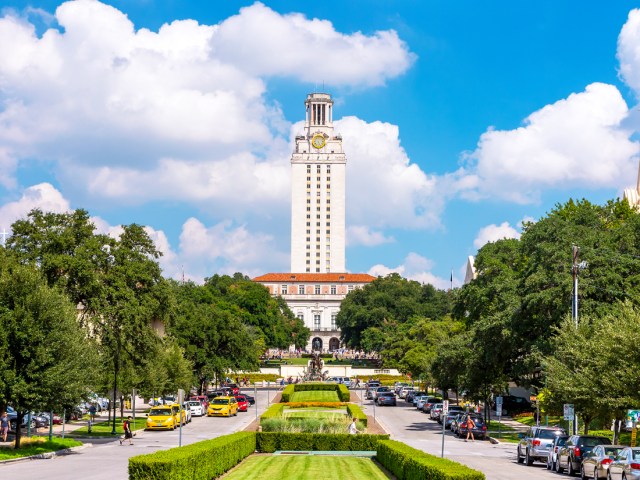They say imitation is the best form of flattery, and the same notion rings true when it comes to place names. While the names of U.S. cities and towns have a diverse set of influences — some come from Indigenous cultures, some are named after European royals, and so on — many others are based on cities that already existed abroad. Here are 15 fascinating U.S. cities and towns that have enthusiastically adopted the name of another place in a foreign country.
Memphis, Tennessee
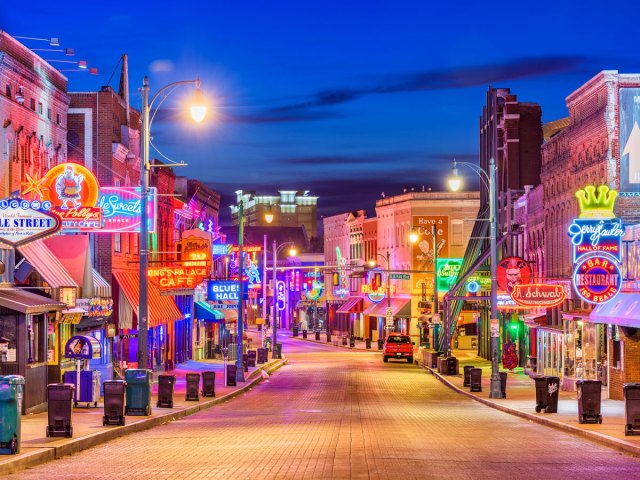
With its neon lights and blues music on every corner, Memphis, Tennessee, feels a world away from its ancient Egyptian namesake. The Tennessee city was built thousands of years after Memphis, Egypt, was abandoned, but both cities have one thing in common: They are constructed alongside great rivers. It’s not certain why the three men (including future President Andrew Jackson) who founded the Tennessee city named it after the one in Egypt, but perhaps they felt the Mississippi River evoked the spirit of the Nile and the prosperous trading and temple city built on its banks.
Modern Memphis is known throughout the world for its music scene. Elvis Presley built Graceland on the city’s outskirts, and Sun Studios, the birthplace of rock ‘n’ roll, is steps away from Beale Street. While there aren’t many obvious similarities with the ruined city on the banks of the Nile, there is one big homage to its Egyptian connection: the Memphis Pyramid.
Melbourne, Florida
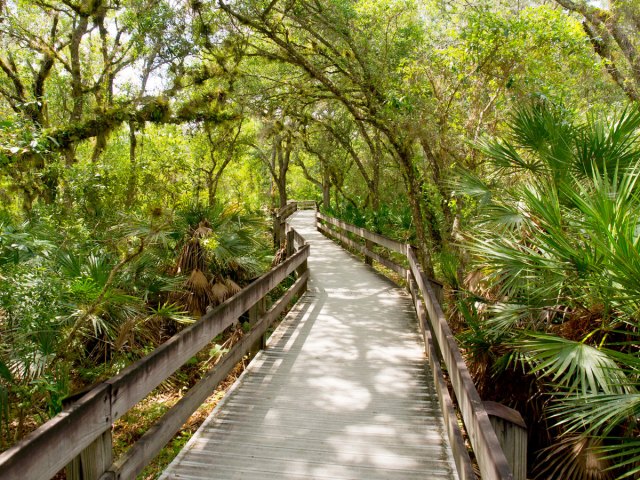
With warm temperatures and nearby beaches, you might be forgiven for mistaking this Florida city with its Australian namesake. But it’s not the geographical similarities that led to this city being named after the Melbourne Down Under.
The area around the Indian River Lagoon began rapidly developing in the late 19th century, and a post office became necessary to serve the community. The settlement needed a name. The area’s inhabitants found inspiration in the town’s first postmaster, Cornthwaite John Hector, who had spent many of his formative years in Melbourne, Australia. (However, it wasn’t Hector who proposed calling the settlement Melbourne; a local woman suggested it.) On December 23, 1888, straws were drawn to select a new name, and Melbourne won.
Today, this harbor city retains many historic Victorian wooden houses that wouldn’t look out of place in Melbourne, Australia. Take a stroll into the charming downtown to admire its tropical murals, browse independent shops, or try a Florida seafood boil on Main Street.
Athens, Georgia

Like its European counterpart, Athens, Georgia, is a center of academia, culture, and the arts. The University of Georgia — the first public land-grant university in the U.S. — was founded here in 1785. After classes began in 1801, a burgeoning city sprang up around campus. In 1806, the city was incorporated, and the Georgian governor at the time, John Milledge, suggested the name Athens, as the Greek capital was home to Europe’s earliest intellectuals, including revered philosophers Plato and Aristotle.
Today, the 19th-century Greek Revival buildings in the city center, including the Taylor Grady House, remind visitors of the Parthenon everywhere they look. And, like its Greek counterpart, Athens, Georgia, enjoys a thriving student scene — you can’t miss the music of up-and-coming indie bands emanating from the campus town’s trendy bars and restaurants.
Paris, Texas

A railroad boom town on the northern edge of the Lone Star State, Paris, Texas, is arguably the most famous of all America’s towns named after the chic French capital — indeed, locals call it “the second-largest Paris in the world.” But no one is exactly sure why the two cities share a name.
Popular belief is that an employee of the town’s founder, George Washington Wright, came up with the idea when the town was incorporated in 1844. The employee, Thomas Poteet, lobbied to call the new town Paris in honor of his French ancestors. But other theories abound, from a local girl winning naming rights in a beauty pageant and choosing Paris, to a group of bored men simply plucking the name out of thin air.
Whatever the origins of its name, Paris, Texas, gained fame thanks to the 1984 road movie of the same name. Visit today, and you’ll find old-school trolleys taking tourists around town, particularly to see the 65-foot high replica Eiffel Tower topped with a red Texan hat. (Just in case you weren’t sure which Paris you were in.)
Boston, Massachusetts
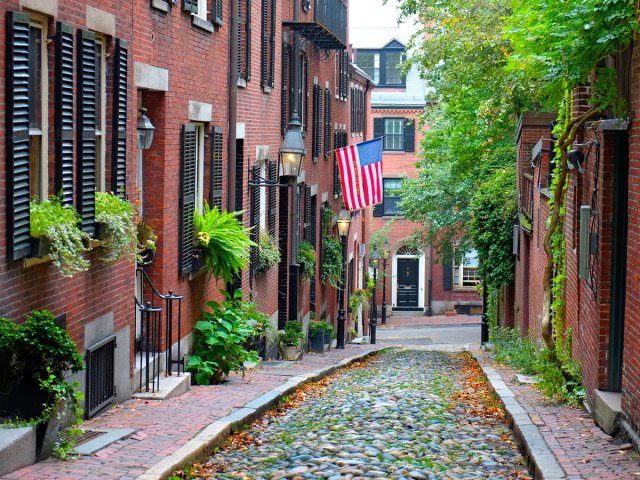
As one of the first cities built by English settlers in the U.S., it’s no surprise that Boston’s name comes from a town in England. Established in 1630, just a decade after the Plymouth colony (a name itself taken from the Cornish port the Puritan settlers had departed) was founded, this Massachusetts city was named for Boston, Lincolnshire.
Many of the colony’s most prominent early citizens hailed from the English cathedral town — which was a hotbed for religious nonconformism at the time — including the Governor and his deputy. It’s estimated that about 250 people left Boston, England, for the shores of the New World in the 1630s (a significant portion of its population). The Puritans of early Boston named the city after their English home, as they hoped to set a shining example of how life could be for their former homeland. It quickly flourished, and trade with Europe soon brought the Massachusetts city wealth and a growing population that now far eclipses that of its namesake.
Delhi, New York
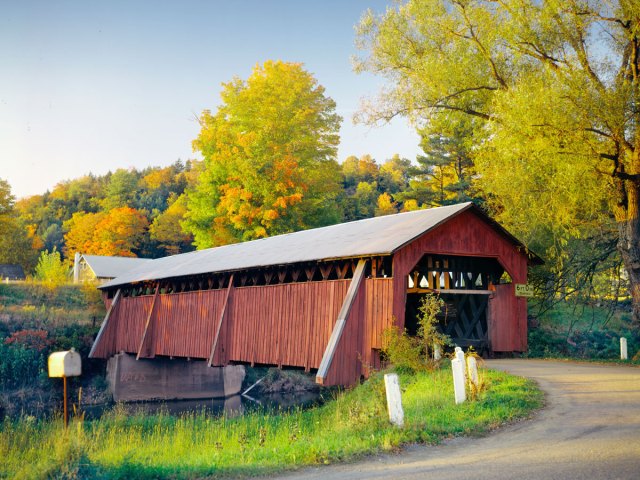
Home to a SUNY campus, this idyllic village in the Catskills of upstate New York, shares a name with India’s bustling megacity. Established in 1798, the town chose its name as an homage to one of its founders: prominent local judge Ebenezer Foote, nicknamed “The Great Mogul.” The word mogul is derived from the Mughal Empire, a powerful Muslim dynasty that ruled over much of South Asia in the early modern era. Sensing a parallel with their own “Great Mogul,” Foote’s friends suggested calling the new town Delhi, the capital city of the Mughal Empire.
When one of Foote’s business rivals, General Erastus Foot, got wind of the news that this new town was to be called Delhi (instead of his preferred name, Mapleton), he allegedly exclaimed “Delhi, Hell-high! Might as well call it Foote-high.” Unwittingly, Root had made his own mark on the town’s name — instead of being pronounced “delly,” like the Indian capital, the U.S. town is pronounced “dell-hi.”
Portland, Maine

Maine’s largest city wasn’t always named Portland. It was originally called Casco, a name either derived from the Abenaki Indigenous word aucocisco, meaning “a place of herons,” or the Spanish word for “helmet.” Later, English settlers called their city on the peninsula Falmouth, after a port town in England. However, Falmouth was destroyed during the Revolutionary War, and its survivors built a new city in its place in 1786, naming it Portland after a peninsula on the Jurassic Coast of England.
The resemblance between the American town and its English namesake is striking. Both places sit on rocky peninsulas, and both have iconic lighthouses looking out over the Atlantic. Portland, Maine, is also the closest transatlantic port in the U.S. to Europe, so its ties with the continent are strong. When you pay a visit, you’ll feel the old world charm in the air: narrow cobbled streets, artisanal boutiques, and historic stone houses make Portland, Maine, a lovely place for a New England getaway. (If you’re curious, Portland, Oregon, was named after the Maine city, since one of its original settlers was from there.)
Toronto, Ohio

Some American cities didn’t need to look too far abroad to find a suitable name. One such example is the city of Toronto, located on the shores of the Ohio River. A respected businessman from Toronto, Ontario, W. F. Dunsbaugh was working in this part of Ohio in the 1880s when the city was named in his honor. Whether it was his own suggestion, or the citizens came up with the idea, is unclear, but it certainly seemed that Toronto, Canada, was, “a place worth emulating,” according to locals at the time.
Toronto, Ohio, is perhaps better known by the name on its welcome sign: Gem City. That’s not because of an abundance of precious stones, but rather the many riverboat captains who stopped here to pick up supplies and were so impressed with the variety of wares available that they called it “a gem of a place.”
Berlin, Connecticut
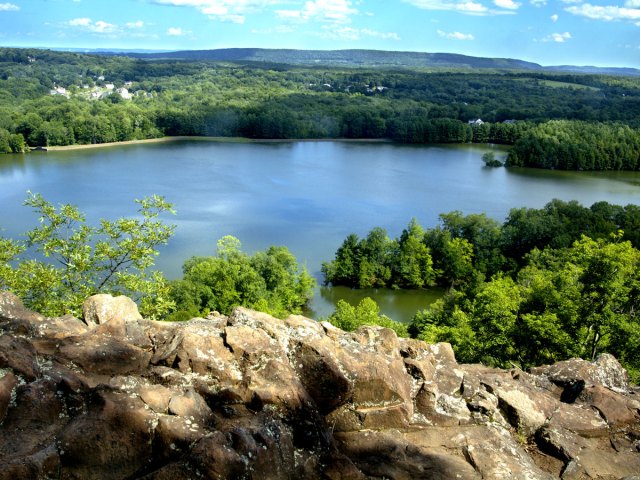
This charming town just outside of Hartford was originally known as Pagonchawnischage (“the great white oak place”) by the area’s Mattabasset Indigenous peoples and later, bizarrely enough, as the Great Swamp Society by the first ecclesiastical group in the area. When it was incorporated in 1785, the area was renamed Berlin, after the capital of Prussia (now capital of Germany).
Although the town has a German name, it takes its Connecticut home to heart. (Quite literally, as it’s located at the geographic center of the state.) Berlin also proudly proclaims to be the “home of the Yankee peddler,” the traveling salesmen who sold mid-19th century Americans everything from nutmeg to hardware. When you’re done admiring the area’s history, explore the verdant woodlands surrounding town or check out neighboring New Britain — another place that searched for identity abroad.
Dublin, Ohio
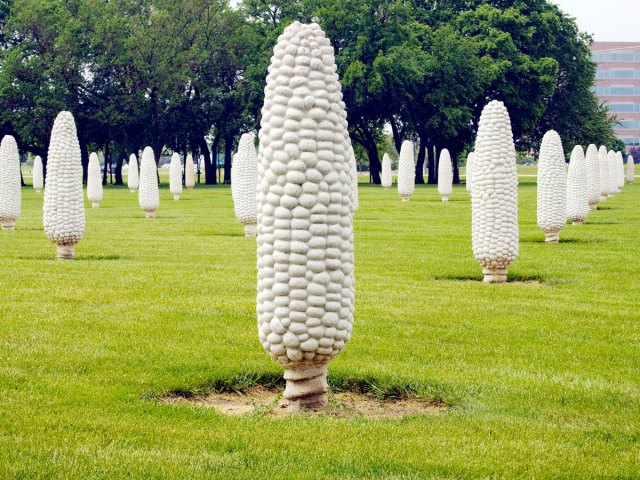
Situated on the outskirts of Columbus, this suburb shares a name with the capital of Ireland. One of the area’s earliest settlers, John Sells, established a village in the area in 1810. He asked his land surveyor, John Shields, to come up with a better name than “Sells Settlement.” According to local lore, Shields replied, “If I have the honor conferred upon me to name your Village, with the brightness of the morn, and the beaming of the sun on the hills and the dales surrounding this beautiful valley, it would give me great pleasure to name your new town after my birthplace, Dublin, Ireland.”
Today, you’d be hard-pressed to miss the references to Ireland in this Midwest town. Its color scheme is all hues of emerald green, there are plenty of Irish-inspired treats for visitors to check out (including a Celtic Cocktail Trail), and clovers adorn logos and signs everywhere you look. Each August, the town hosts the three-day Dublin Irish Festival, an extravagant celebration of Irish-American culture which claims to be the largest festival of its kind.
Florence, Alabama
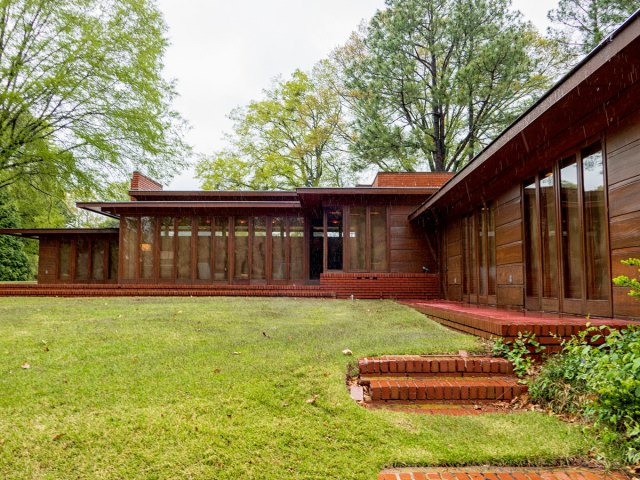
Florence, Alabama, honors the Renaissance city of Florence, Italy, in both its name and its nature. Situated along the banks of the Tennessee River, this college town is a center of learning and creativity. It’s home to one of Alabama’s oldest universities, a log cabin that served as the childhood home of blues musician W. C. Handy, and the only Frank Lloyd Wright-designed home in the state.
Florence, Alabama, was the project of the Cypress Land Company, which purchased cheap tracts of land here in 1818. Its Italian surveyor, Ferdinand Sannoner, was tasked with naming the new town and opted to name it after his favorite city back home, which is situated along the Arno River.
The original Florence may have been home to Renaissance figures such as Dante Aligheri and Michelangelo, but every October, Florence, Alabama, is home to the state’s renaissance faire. It celebrates the town’s identity as a “Renaissance City,” and if you stop by, you’re likely to bump into living history exhibits, craft sellers, and maybe even a magician.
Canton, Michigan

This township on the outskirts of Detroit shares a name with a port city in southern China. (Although today, Canton in China is officially known as Guangzhou; the name Canton originally came from a European mistranslation of the city’s name.) How did this Michigan town end up with the same name as somewhere nearly 8,000 miles away?
As the U.S. began to increase its trade abroad in the 18th and 19th centuries, a fascination with China emerged, and many Chinese people emigrated to the Americas in search of work. Around the same time, the U.S. Post Office in Washington, D.C., swamped with a series of new towns sharing the same name, decreed that new townships couldn’t take the name of existing places in America.
The settlers in this part of Michigan saw a winning opportunity. In 1834, they called their area “Canton,” and two nearby townships followed suit, opting for Nankin and Peking. However, Canton is the only one that kept its Chinese-inspired name.
Oxford, Mississippi

The folks who named Oxford, Mississippi, were nothing if not optimistic about their town’s future when it was incorporated in 1837. Resident T. D. Isom suggested naming it after Oxford, England, in the hopes that his hometown would have a prestigious college one day. Four years later, the Mississippi legislature voted to make Oxford, Mississippi, the home of the state’s first university, by a margin of just one vote.
The university opened in 1848, and is now affectionately known as Ole Miss. Like the English city, Oxford, Mississippi, is the quintessential college town: Neoclassical-style grand halls are scattered around the campus, parks big and small fill the air with floral aromas and the chatter of students, and there are more great bookstores than you can count. However, if you still want to feel like you’re in the English city, take a tour of town on a double-decker bus with a local historian.
Warsaw, Indiana
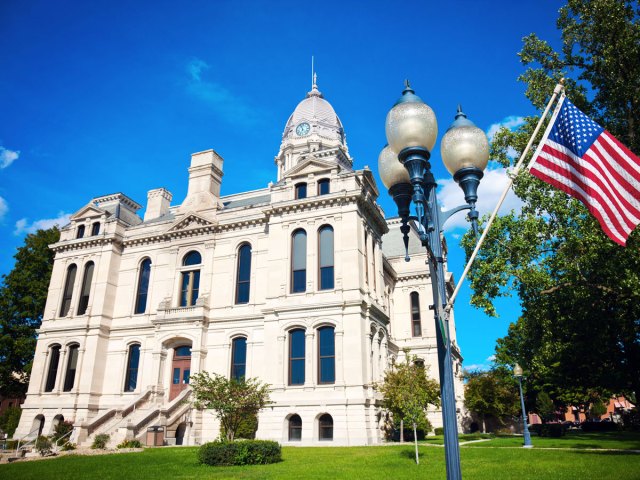
The Polish capital is full of green parks and rivers to explore, and so too is Warsaw, Indiana. The seat of Kosciusko County, this small city (population approximately 15,000) is located between Fort Wayne and Lake Michigan.
When settlers arrived in Indiana in the early 19th century, many of them were of Polish heritage. Kosciusko County (founded 1836) is named after Tadeusz Kościuszko, a Polish-Lithuanian military leader who defended his homeland from its enemies. Kościuszko also fought in the Revolutionary War and was a close friend of Thomas Jefferson. Naming a new county in his honor was a fine way to commemorate the Polish-American national hero, and in turn, Kosciusko County’s seat was named after his beloved capital, Warsaw.
Although Warsaw’s Polish connection today remains only in name, visitors still come to the city to admire the ornate European-style architecture of the County Courthouse, or peacefully fish for bluegills in Pike Lake.
Madrid, Iowa
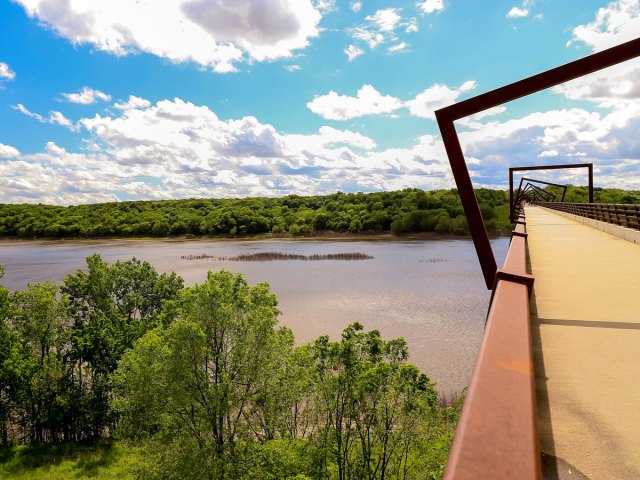
Expect the unexpected in this former coal mining community. It’s home to the first Hindu temple in Iowa, as well as the High Trestle Trail, a 25-mile biking and hiking trail along a former railway line in the Des Moines River valley. What’s also surprising is how (and why) this town shares a name with the palatial Spanish capital, Madrid.
A settler from Pennsylvania named Charles W. Gaston arrived in the area in 1846. His second wife was from Sweden, so he initially called the area Swede Point. However, family politics soon got in the way. During a fallout over his mother-in-law’s will, Gaston decided to change Swede Point’s name to something that would erase all traces of Sweden from the area’s history.
One of Gaston’s employees was from Spain, and often talked of its glorious capital. Gaston reportedly disliked the man intensely, so, to spite his Swedish in-laws, he changed the name of the town to Madrid in 1857. The name stuck, but the Swedes may have got the last laugh, as the area is distinguished for being the second-oldest Swedish settlement in the state.






